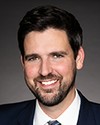Mr. Speaker, I rise this afternoon to speak to the latest Conservative omnibus bill. This bill is a product of a tired, old Conservative government that has lost touch with the challenges and opportunities of Canadians.
Bill C-43 is overflowing with changes that have no place in a budget bill, such as the petty change the Conservatives want to make to deny refugee claimants access to social assistance.
The Conservatives are actually using Bill C-43 in an effort to deny income support to refugee claimants, right after their attempt to limit refugee claimants' access to health care was struck down by the Federal Court. The court called that Conservative policy “cruel and unusual treatment” that “outrages (Canadians') standards of decency.”
A recent editorial in The Globe and Mail called this bill “an abuse of process and shown contempt for Parliament by subverting its role”. The Globe is right. It is anti-democratic for the Conservatives to once again use a massive omnibus budget bill to limit debate and ram through so many unrelated measures in Parliament.
In the last few years, the Conservatives have concocted and implemented a process that prevents MPs from all parties from doing their jobs in properly scrutinizing legislation. This is leading to a lot of sloppy mistakes. The Conservatives' general disdain for Canada's democratic institutions and their outright contempt for Parliament have led to countless errors being cemented into Canadian law.
This bill would try to fix a number of previous Conservative mistakes. I would like to give members a few examples of areas where the Conservatives are trying to use this omnibus bill to fix errors in previous bills.
First, the Conservatives forgot to include a tax credit in the last omnibus budget bill, Bill C-31, for interest paid on Canada apprentice loans. The Conservatives try to fix that in clause 35 of Bill C-43.
The second is that the government forgot to ensure that PRPPs are subject to similar GST treatment as RRSPs. The fix for that is found in part 2 of Bill C-43.
Third, they forgot to include a refund in Bill C-31 for duties paid on destroyed tobacco products. That correction is in Bill C-43, part 3.
Fourth, they forgot to change a legal heading when the Conservatives used Bill C-19 to transfer spending powers from the Minister of Foreign Affairs to the Minister of Citizenship and Immigration. The Conservatives gave all of the powers in that section of the law to the immigration minister, but still named the section “Minister of Foreign Affairs”.
Fifth, they forgot in Bill C-38 to allow the Minister of Industry to publicly disclose certain information regarding the review process.
Sixth, they forgot in Bill C-31 to include foreign money services businesses as foreign entities under the Proceeds of Crime (Money Laundering) and Terrorist Financing Act.
Seventh, they ignored expert advice and capped the size of the Social Security Tribunal in Bill C-38, leading to massive backlogs in the system.
Eighth, they failed to realize in Bill C-4 that the amalgamation of the Blue Water Bridge Authority might not go as planned.
Ninth, they created confusion in Bill C-4 with various amendments related to public service labour, including a reference to the wrong clause number.
Tenth, they forgot in Bill C-45 to coordinate between RCMP pension rule changes in Bill C-42 and rule changes that raised the age for public service pensions in Bill C-45.
There are 10 examples of the the mistakes the Conservatives made in the previous bill that they are trying to fix in this omnibus bill.
The fact is that the Conservatives' game plan of limiting debate and ramming these bills through Parliaments is responsible for creating these mistakes. Parliament is denied its legitimate role to identify these flaws in the process of real parliamentary debate at committee and in the House and fixing them.
The reason these mistakes are made in the first place is because of the deeply flawed process surrounding omnibus legislation.
I would like to talk a bit today about tax policy, GST, EI, and the income-splitting proposal that the Conservatives had in their last platform.
Bill C-43 actually adds GST to some goods and services that are used by or provided by non-profit organizations operating health care facilities. When we asked officials for an example of what kinds of service might get caught up in this GST hike, the example they provided was of a health care facility that also runs a residential apartment building, such as an old age home. Adding GST to services purchased by or provided by old age homes means one of two things: either it will cut into the bottom line of the health care facility, or the old age home will have no choice but to pass the tax hike on to the people they serve. In the case of an old age home, it means that the government is getting ready to hike the GST and punish Canadian seniors, who are already struggling to get by on a fixed income.
In terms of employment insurance, Bill C-43 also gets it wrong. Bill C-43 offers a small EI tax cut to employers, but only if they agree to stay small. Instead of creating real jobs and growth, Bill C-43 would actually encourage businesses to stay small and would punish them if they grow and become more successful. Due to a design flaw in Bill C-43, the so-called small business job credit creates an incentive for some businesses to fire workers. That is why economist Jack Mintz has called it “a disincentive to growth” and why economist Mike Moffatt said “...the proposed ‘Small Business Job Credit’ has major structural flaws that, in many cases, give firms an incentive to fire workers and cut salaries.”
Even Finance Canada officials last night acknowledged that this tax credit creates a disincentive for some employers to hire.
Last month the PBO looked at this tax credit and found that it will only create 800 jobs over the next two years, at a cost of $550 million. That means it will cost taxpayers almost $700,000 per job.
In response to the need to encourage businesses to hire and to reduce EI premiums for businesses that do that or reward businesses that hire, the Liberals have proposed an EI holiday for new hires. This plan would only reward businesses that actually create jobs. The Liberal plan has been endorsed by Canadian job creators, including the Canadian Manufacturers & Exporters, which has said that the Liberal plan for an EI exemption for new hires “would create jobs”. The Restaurants Canada organization, representing restaurants across the country, said “This...proposal for an EI exemption for new hires would help restaurants create jobs.” The CFIB said it loves the Liberal plan to exempt small business from EI premiums for new hires, which has lots of job potential.
The same PBO report that looked at the Conservatives' tax credit and identified the flawed program that would cost $700,000 per job also identified that the Conservatives are collecting billions of dollars in excess of taxes in EI over the next two years and that the Conservatives actually have the capacity to cut EI premiums significantly.
The PBO estimates that artificially high EI rates under the Conservatives will cost the Canadian economy 10,000 jobs over the next two years. That is 10,000 more Canadians who will be out of work over the next two years because the Conservatives are using artificially high EI premiums to pad the books to fund pre-election spending. The Conservatives are ignoring the evidence and putting Conservative politics ahead of the Canadian economy and ahead of the interests of Canadian workers and employers.
Speaking of ignoring the evidence, the Conservatives appear ready to go ahead with their flawed income-splitting scheme that was introduced in their last platform. The idea that the Conservatives were putting forth in their last platform has been panned by everyone from the C.D. Howe Institute and the Canadian Taxpayers Federation to the Mowat Centre and the Canadian Centre for Policy Alternatives. It was even panned by the late Jim Flaherty himself.
It is being panned because, as articulated in their platform, fewer than 15% of Canadian households would benefit, most of them high-income households, at a cost of $3 billion per year to the federal treasury and another $2 billion per year to provincial governments. Provincial governments, as we know, are facing deficits and huge fiscal challenges.
Under the Conservatives' scheme, the Prime Minister, earning $320,000 a year and with a stay-at-home spouse, would save about $6,500 per year. Meanwhile, a Canadian earning the average industrial wage and with a stay-at-home spouse would save less than $10 per week, and most households would get no benefit whatsoever.
We have a different approach. The Liberal approach is that we need to build a plan for 2015 that would be focused on creating jobs and growth to strengthen the Canadian middle class. The status quo is not working. The current federal government is so preoccupied with day-to-day politics that it has lost track of and is out of touch with the challenges and opportunities facing Canadian families. Those are challenges such as aging demographics and a slow-growth economy, which some refer to as secular stagnation. Baby boomers are rapidly approaching retirement age, and as they exit the workforce, they will leave a shrinking tax base and labour shortages in their wake. They will also place a greater strain on health care systems as they age. We will end up with more Canadians using the social safety net and fewer Canadians paying into it. These demographic pressures are leading economists to predict that slow economic growth could become the new normal.
The Canadian economy, frankly, is already sputtering under the Conservatives. Job growth over the last two years has been extremely weak, consumer debt is high, infrastructure is in disrepair, and housing prices in our cities are inflated. Last year the Canadian economy created a paltry 5,300 net new full-time jobs across the country. The percentage of Canadians working today is still two full points lower than before the downturn. There are 200,000 more jobless Canadians today than before the downturn, and the number of Canadians who are considered long-term unemployed is twice that of 2008. More than 150,000 Canadians are unemployed and have been searching for work for a year or longer. As we all know, the longer they are out of the workforce, the harder it is for them to get back in.
On the other end of the spectrum, we have young Canadians who simply cannot get their foot in the door of the Canadian labour market. Recent grads are facing huge challenges. There are 200,000 fewer jobs for young Canadians today than before the downturn, before 2008. Persistently high youth unemployment and under-employment is robbing a generation of people of opportunities they need to succeed. TD economist Craig Alexander and CIBC economist Benjamin Tal describe a scenario of a lost generation of Canadian youth and a lost generation of potential for all Canadians.
This is despite the fact that this generation is the most technologically adept, most educated generation in our nation's history, and therein lies the challenge we face. There is a gap between the education they have and the job market. We have people without jobs and jobs without people.
Too many Canadians in their twenties are left saddled with big student loans and are unable to make ends meet. All too often, it is their middle-class parents and grandparents who are footing the bill. Among the hardest hit are Canadians who are actually squeezed between helping their adult children pay the bills and taking care of their aging parents at the same time, the sandwich generation. In many cases these parents in their forties, fifties, and sixties are taking on additional debt or dipping into their retirement savings. In fact, this is one of the things that is driving record levels of personal debt, which is about $1.65 for every dollar of annual income. According to the Canadian Financial Monitor, Canadians who are 55 years of age or older are two and a half times more likely to refinance their mortgage if they have children than if they do not have children. Their average household debt is twice that of their childless peers.
Meanwhile, many younger families do not actually have a mortgage to refinance. Instead, they are being priced out of the housing market altogether.
On this front, the Conservative government must share at least part of the blame for the high housing prices in Canada and commensurate personal debt. It was the Conservative government, in budget 2006, that brought in 40-year mortgages with no down payment. It introduced them for the first time in Canada. It had an effect, because in the first half of 2008, more than half of all new mortgages in Canada were 40-year mortgages, and 10% of those had zero down payment.
The Conservatives shifted Canada's borrowing culture and lending culture, and that shift has helped fuel record levels of housing prices commensurate with that household debt. They have since reversed course and returned to the norm that was the case under Liberal governments in the past, meaning 25-year mortgages with at least 5% down. However, it is important to recognize the Conservatives' culpability in bringing 40-year mortgages with no down payments into Canada and helping fuel record levels of personal debt related to skyrocketing housing prices.
From the OECD and the IMF to the Bank of Canada, one thing on which Canadian and international economists agree is that elevated housing prices and household debt pose a big domestic threat to our economy. These elevated housing prices have helped widen the generational divide between those on the one hand who have watched the value of their house appreciate and in some cases have tapped into that equity to help fund consumption, and those on the other hand who cannot afford to even enter the housing market.
We are seeing greater income inequality in Canada, and fewer Canadians now think of themselves as being middle class. In fact, the number of Canadians who self-identify as middle class has dropped from 64% in 2009 to 47% in 2014. Even more troubling is that for the first time in recent history, more Canadians now believe that the next generation, their children and grandchildren, will be worse off, not better off, than they are today. That is the first time this has happened in Canada.
What we need is a federal government that will rise to meet these big challenges facing our country: aging demographics, slow growth, soft job market, and high levels of youth unemployment and underemployment. These are all challenges, but they also represent opportunities. I will give one specific challenge to our country that is a big social and economic challenge but that also represents an opportunity if we can get it right.
Over the next 10 years, there will be about 400,000 young aboriginal and first nation Canadians who will be of workforce age. If they have the skills they need for the jobs of today, that would be really good for our economy. If they do not, it represents a demographic, economic, and social time bomb for our country.
The reality is that we have failed collectively as governments at all levels to address this challenge. If we take it seriously, young aboriginal workers can be part of a Canadian growth and economic success story. We have to get it right. We have to take these issues seriously.
Liberals believe that sustainable growth and a focus on creating jobs, growth, and opportunities is the best way to benefit Canadian middle-class families and to restore hope to them. We believe we need to invest in infrastructure, training, innovation, and trade, and we believe that we need to keep our competitive tax rates.
Bill C-43 does nothing to grow the Canadian economy, and it ignores the very real challenges of the middle class and of young Canadians.
In a very short period of time, potentially within days, we will be seeing a fall economic statement. We hope the government chooses to invest in the future by investing in infrastructure, in training, and in young Canadians. We need the government to do so, and if this government does not, a future Liberal government will.










